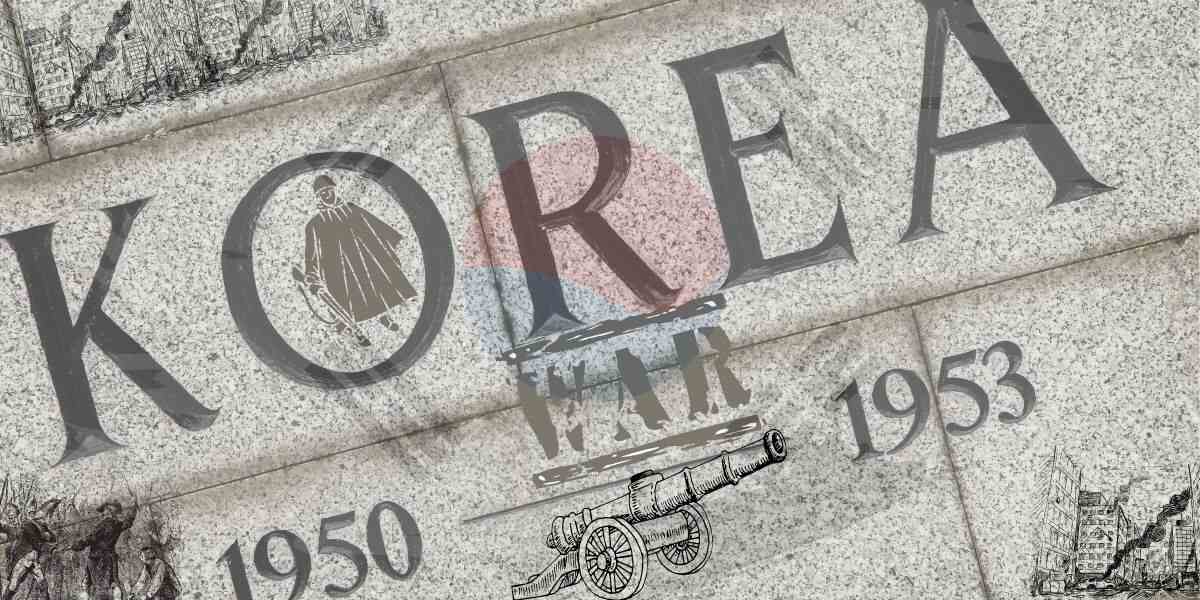The Korean War, often overshadowed by more well-known conflicts such as World War I, World War II, and the Vietnam War, was a pivotal event in the history of the Cold War. The war started on June 25, 1950, when the Army of North Korea crossed the 38th parallel (38th parallel lineament), the boundary between the Soviet-backed Democratic People’s Republic of Korea to the North and the pro-Western Republic of Korea to the South.
The Origins of the Korean War
Having been under Japanese rule in the early 20th century (1910 to 1945), the Korean peninsula’s fate fell to the United States and the Soviet Union after Japan’s defeat in World War II. In August 1945, the peninsula experienced a distinctive division along the 38th parallel line, with the northern part under Russian occupation and the southern part under United States control.
This division led to the creation of two separate entities: the anti-communist South Korea, governed by dictator Syngman Rhee, and the communist North Korea, led by dictator Kim Il Sung. Escalating tensions between these factions resulted in frequent border conflict and thousands of casualties even before the war’s official outbreak.
The Korean War and the Cold War
The North Korean invasion of South Korea came as a shock to American officials, who saw it as a direct challenge to their efforts to contain communism. They believed that if they allowed Korea to fall to the communists, it would only inspire the Soviet Union and lead to further aggression. As a result, intervention was seen as necessary to prevent the expansion of communism.
The United States, along with a coalition of other nations, entered the war to support South Korea. Initially, the war was a defensive one to repel the North Korean forces from the south. However, as American troops pushed northward, the war adapted into an offensive campaign with the aim of liberating North Korea from communism.
The Battlefield and Deadlock
The initial stages of the Korean War posed challenges for the Allies. The North Korean army exhibited superior training and advanced equipment, while South Korean forces lacked experience and often approached the point of moving back. Harsh weather conditions and limited access to clean water compounded the difficulties, resulting in diseases and illnesses that became a constant threat to the troops.
However, a turning point came with the successful Inch’on Landing (Battle of Incheon), an amphibious operation that expelled North Korean forces from Seoul. This triumph filled the Allies with momentum and hope for a swift resolution. Yet, as they led closer to the Chinese border at the Yalu River, their progress triggered Chinese intervention. Chinese leader Mao Zedong sent troops to North Korea, warning the United States to stay away from their border to avoid a full-scale war.
The MacArthur Controversy
General Douglas MacArthur, commander of the Asian theater, clashed with President Truman’s cautious approach and advocated an all-out conflict against China. His aggressive stance created tension between him and the president. MacArthur’s letter to a Republican leader calling for an all-out war on China led to his dismissal for insubordination.
Korean Demilitarized Zone
Peace negotiations began with President Truman and his new military commanders in July 1951 at Panmunjom, but the fighting continued along the 38th parallel. The negotiations faced numerous challenges, including the issue of repatriation of prisoners of war. The Chinese and North Koreans insisted on forced repatriation, while the United States opposed it. After more than two years of negotiations (the longest negotiated armistice in history), an armistice was finally signed on July 27, 1953.
The armistice agreement was signed at Panmunjom and created a Korean Demilitarized Zone that still exists today, separating North and South Korea. Additionally, South Korea gained extra territory near the 38th parallel. However, the fighting stopped but the war never officially concluded, and a peace treaty was never ratified. The Korean peninsula remains divided to this day.
Korean War Casualties
The Korean War caused devastating consequences, resulting in significant loss of life. Nearly 5 million individuals, both civilians and soldiers, expired during the conflict. Civilian casualties comprised more than half of the overall death toll, surpassing rates seen in World War II and the Vietnam War. On the other hand, the United States suffered around 40,000 deaths and over 100,000 wounded during the war. The sacrifices made by American soldiers were honored at the Korean War Veterans Memorial in Washington, D.C., as well as other memorials across the country. These memorials stand as reminders of the courage and devotion shown by those who fought in the “Forgotten War”.
Conclusion
Concluding in a deadlock, the war left the Korean peninsula divided. The war’s colossal human cost, resulting in millions of lives lost, serves as a solemn reminder of the price paid for freedom and the dire consequences of war.
